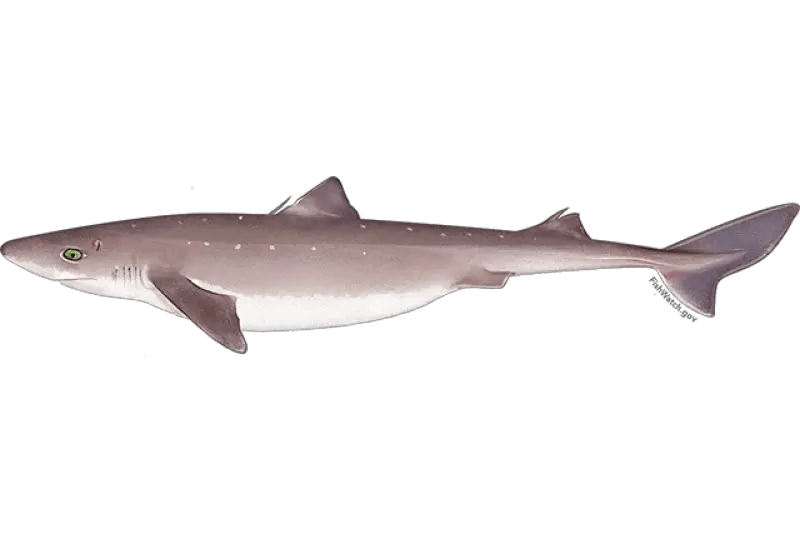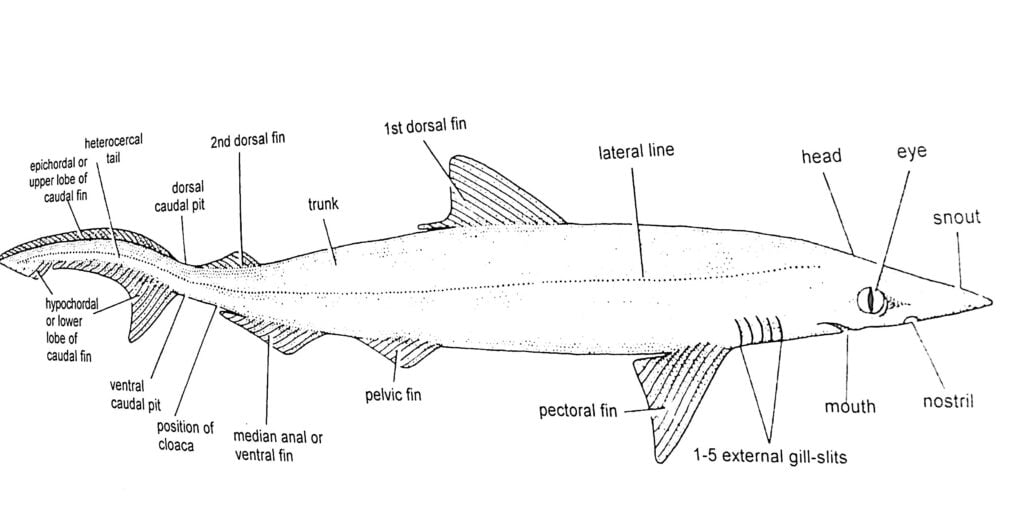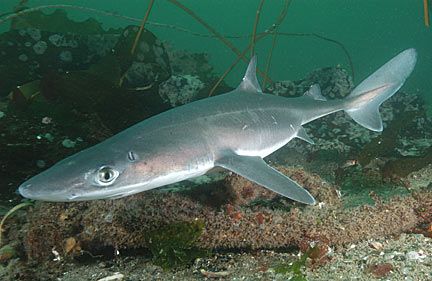Scoliodon is a marine cartilaginous fish, Scoliodon also known as Dogfish, they are an active predator, we will discuss the aperture or pores present on their body. Scoliodon have a streamlined body shape, they have a blackish appearance on the dorsal side and white coloration on the ventral side, the body surface is rough due to the presence of a backward directed spine of the placoid scale, the placoid scales are embedded in their skin.
Table of Contents
Body Aperture of Scoliodon:
Ventral Mouth:
On the anterior side of the dorso-ventrally flattened head, the mouth presents ventrally, the transverse mouth is half-moon-shaped (crescentic). The wide transverse mouth is bordered by the upper jaw and lower jaw, on each jaw sharp backwardly directed teeth are arranged in one or two rows. The sharp backwardly directed teeth are used to capture the prey but the teeth are not for chewing in Scoliodon.

Nostril:
As Scoliodon is a predator so the olfactory lobe is very important for them, for olfaction they have external nares or nostrils. In Scoliodon two nostrils or external nares are present above the mouth on the head on the anterior side ventrally one on each side of the head. The external nares are crescentic shaped, the external nares only take part in olfaction, they are not connected to the mouth cavity, so they have no role in respiration.
External Gill Slits:
Scoliodon respire through the paired lateral gill present in the gill sacs, the gill sacs open outside through external gill slits. Behind the eyes, on the anterior side of pectoral fins, 5 pairs of vertical slits or gill slits are present laterally. The gill slits or branchial cleft open into the pharyngeal cavity through the gill pouches internally.
Cloaca:
On the posterior end of the body near the pelvic fins, a median vertical cleft is present in a shallow depression through which the coacal opens outside. The coacal aperture leads to a cavity or coacal inside, the coacal is the common exit for fecal matter, urine, and gametes.
In coacal, the digestive system opens outside through the anus on the anterior side, on the posterior side the urinogenital system opens outside, in the female urinary system opens through a conical papilla separately, but in males, both urinary tract and genital pore open into cloaca together.

Abdominal Aperture:
The abdominal body cavity opens outside through a pair of pores near the cloaca known as the abdominal aperture. On each side of the cloaca a papilla is present, abdominal cavity is open outside through the papilla.
Caudal Pit:
It is a special identity of the genus Scoliodon, near tail Scoliodon, which has two small pores or pits known as the caudal pit. At the base of the caudal fin two caudal pits are present, one on the dorsal side near the base of the caudal fin and another once present near the base of the caudal fin on the ventral side.
Pores of the Lateral Line:
In Scoliodon, the lateral line of sense present on each side of the body laterally run from the head to tail. The lateral line of sense helps Scoliodon to understand about different parameters of the ocean water and below the lateral line, a sensory canal system is present. The sensory canal system opens outside through a series of external minutes pores outside along the lateral line.
Ampularllary Pores:
A special sense organ Ampullae of Lorenzini presents over their head and snout, some minutes porer presents on their head and snout which are actually the opening of Ampullae of Lorenzini present on their head. The ampullary pores secret mucous when mild pressure is applied to that region.

So there are many pores on their body, at first on the head they have the ventral crescentic mouth, two crescentic ventral external nostrils, ampullae of Lorenzini, on the anterior part of pectoral fins 5 oblique gill slits, pores of lateral line on each side of the body, two caudal pit, abdominal pores, cloacal aperture.
Detailed Study On
External Morphology of Scoliodon
Scoliodon: Habits Habitat and Geographical Distribution
Biological Significance of Placodermi
Hi Everyone!!! Welcome to Imaluop. Imaluop always try to learn some new and he want to share to other people. Here we will try to learn various topics on Science, specially on Biological Sciences.